Seoul, the vibrant capital of South Korea, is a city that seamlessly blends tradition with modernity. Amidst the towering skyscrapers and bustling streets lies a treasure trove of cultural experiences, and one such gem is the Gwangjang Market.
Some people call it Gwangjang, but on the signage, it’s Kwang Jang. However you call it, welcome to this vibrant and bustling market situated in the heart of Seoul, South Korea.
After our quick visit to Bukchon Hanok Village, my friend and I tagged along with our other friend who was meeting her Korean friends in Gwangjang. I thought there’s no better experience than going with the locals, so off we went.

Established in 1905, Gwangjang Market stands as one of the oldest and largest traditional markets in South Korea. Its rich history is woven into the fabric of Seoul, witnessing the city’s evolution over the decades. Originally known as Dongdaemun Market, Gwangjang Market underwent a name change in 1959 and has since become an iconic destination for locals and tourists alike.
Getting There
Gwangjang Market is conveniently located in the Mapo-gu district of Seoul, easily accessible by public transportation. The nearest subway station is Gongdeok Station, making it a convenient stop for both locals and tourists.
Here’s a quick guide to help you navigate this popular destination filled with local flavors and cultural experiences.
Local Delicacies
Dive into the rich culinary scene at Gwangjang Market. Indulge in a variety of street food delights such as tteokbokki (spicy rice cakes), odeng (fish cake skewers), and bindaetteok (mung bean pancakes). Don’t miss out on the famous Korean dumplings known as mandu, available in various flavors.
I ate a lot of tteokbokki (photo on the left below) and even brought home packs of it but never had my own photo. 😊
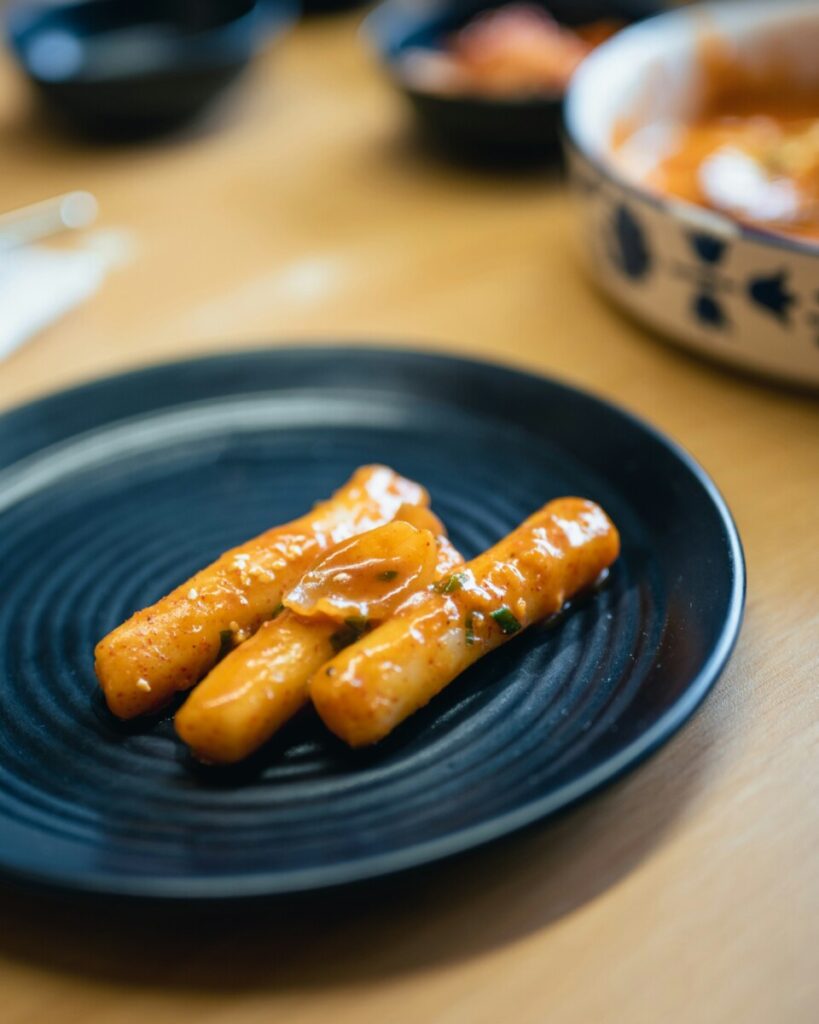
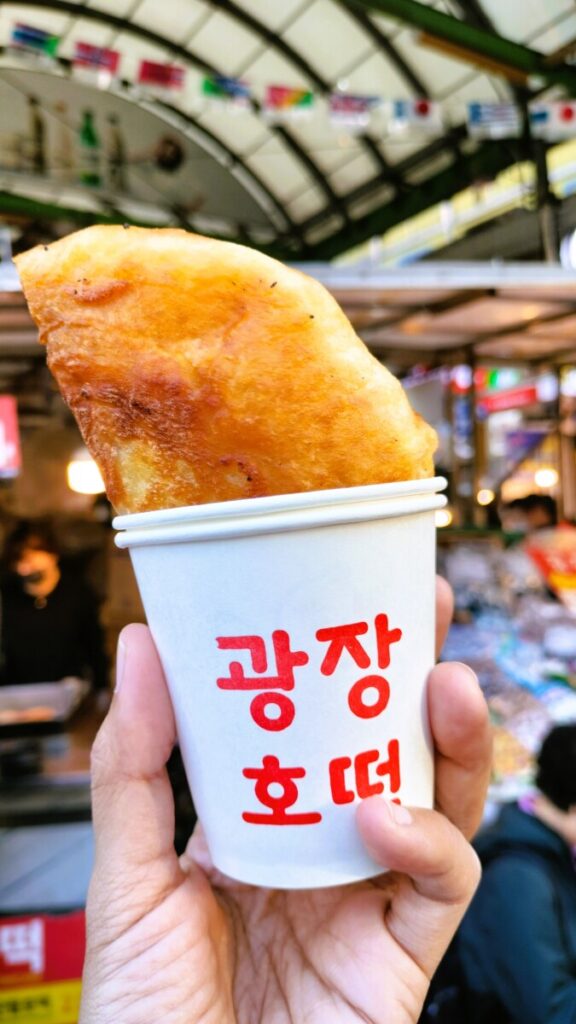

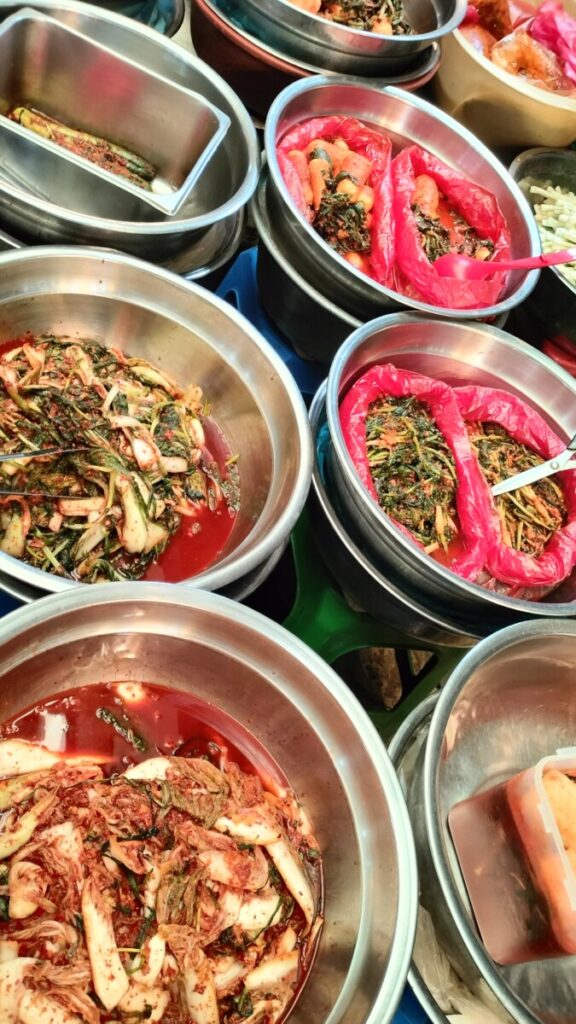
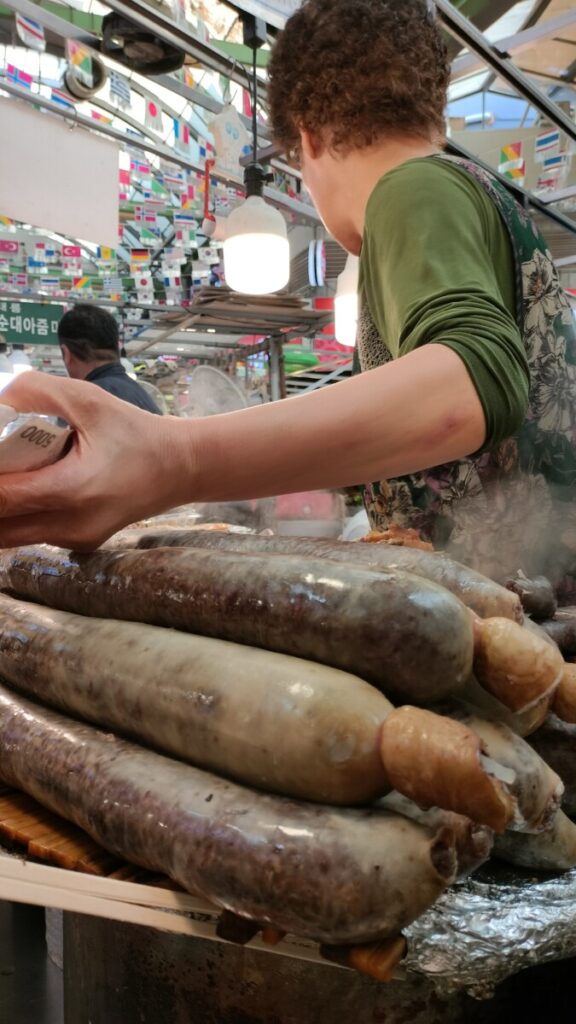
Fresh Produce & Meats
Experience the vibrant colors and aromas of fresh produce at the market’s numerous stalls. From seasonal fruits to vegetables, Gwangjang Market offers a feast for the senses. Engage with local vendors and get a taste of South Korea’s agricultural abundance.

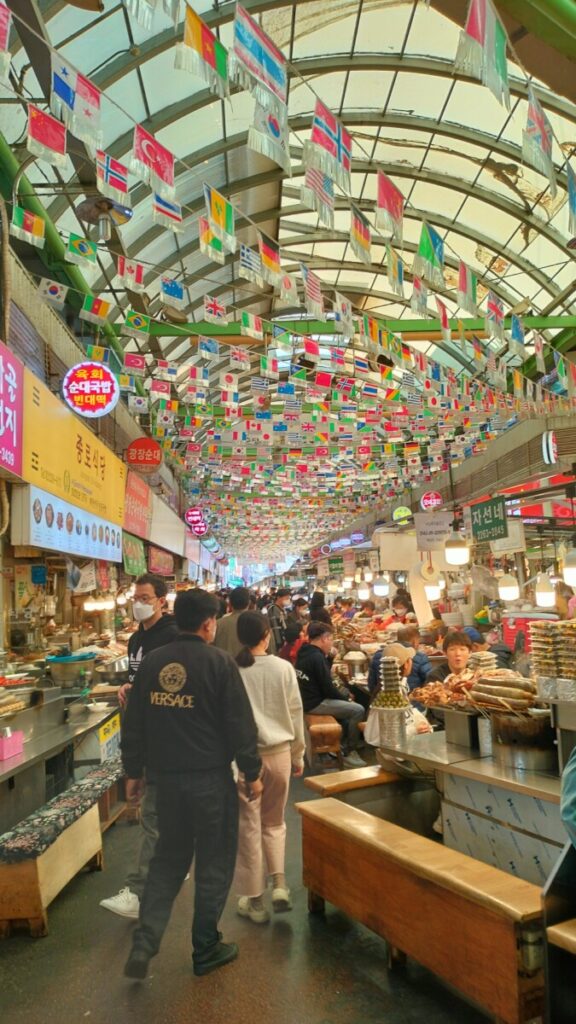
Authentic Souvenirs
Explore the market’s diverse range of shops and stalls offering unique Korean souvenirs. From traditional crafts to modern trinkets and even snacks, you’ll find something to take home as a memorable keepsake.
I bought a sweater in Gwangjang – loved the soft cloth and jewels sewn to it. I only got to wear it after one year though (when I was heading to Taiwan) since I couldn’t find the perfect time to wear it in the hot and humid Philippines.
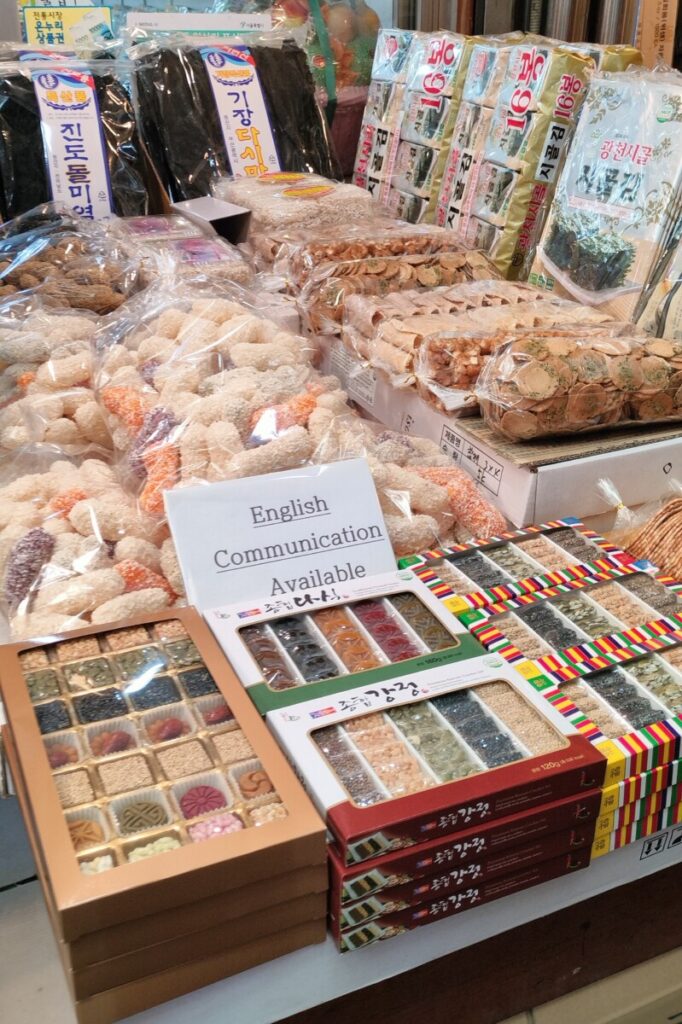
Cultural Immersion
Immerse yourself in the local culture by interacting with the friendly vendors. Many speak basic English and are more than willing to share insights into Korean traditions and customs. Take the opportunity to learn a few basic Korean phrases and enhance your cultural experience.
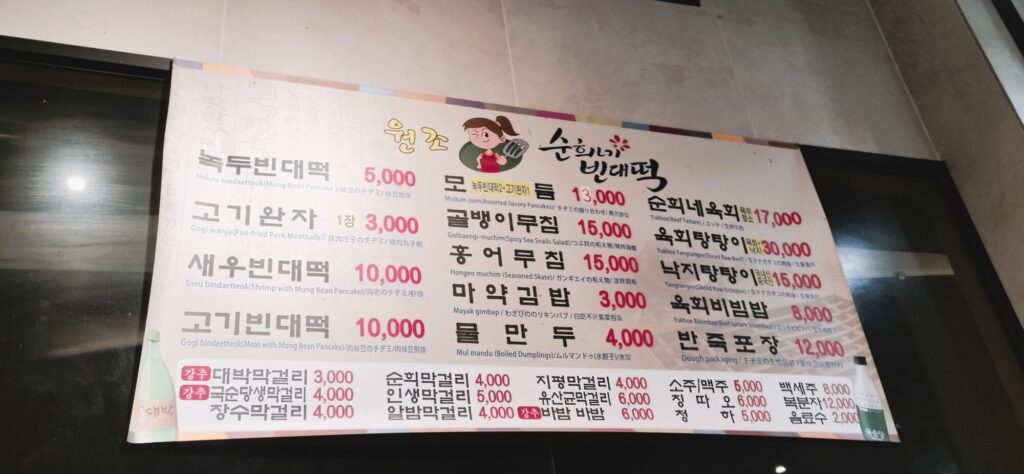
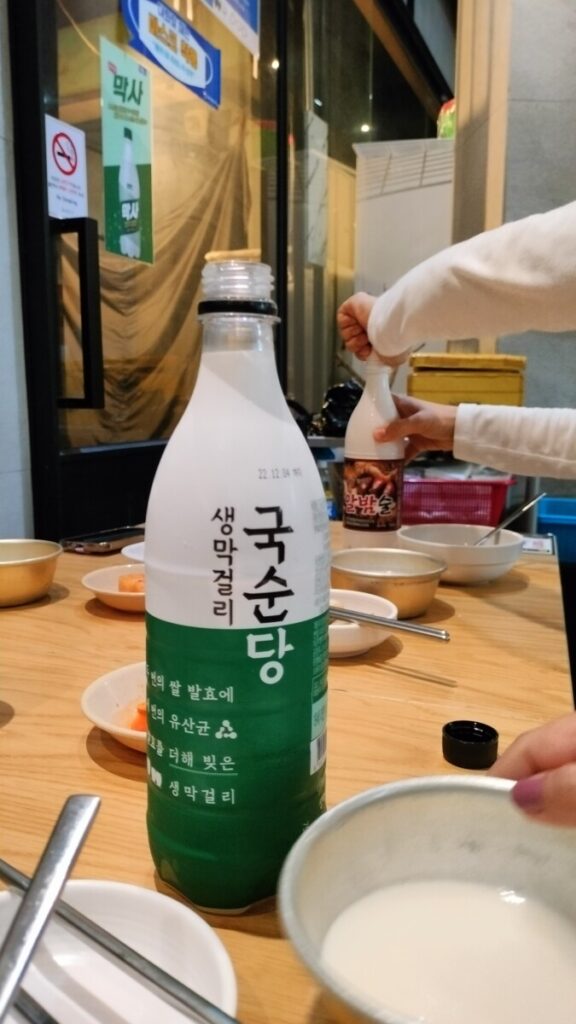
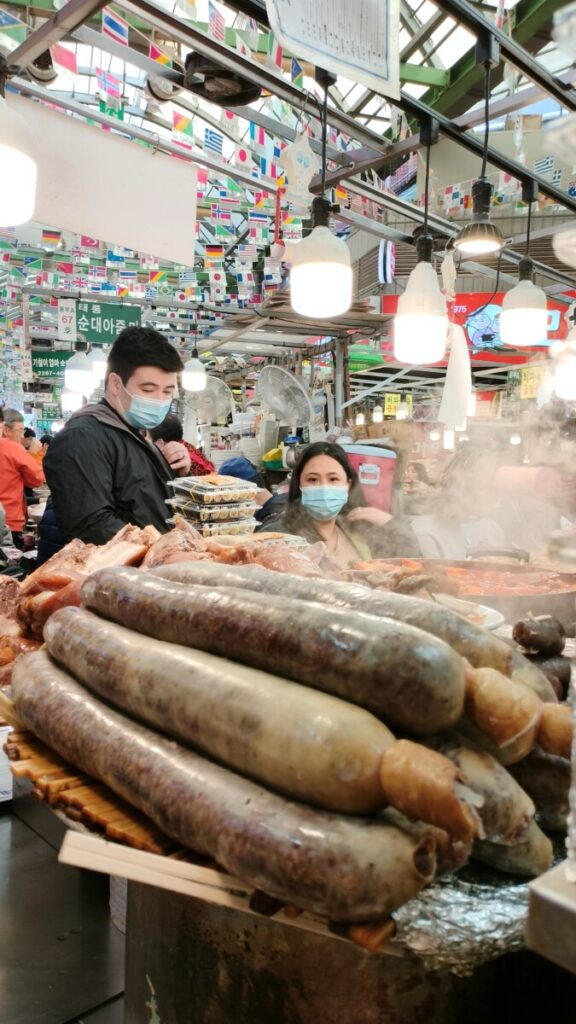
Thanks to our friends who gave us a taste of Korea – an afternoon filled with good food and much-needed drinks. They sure knew the best places. Geonbae!
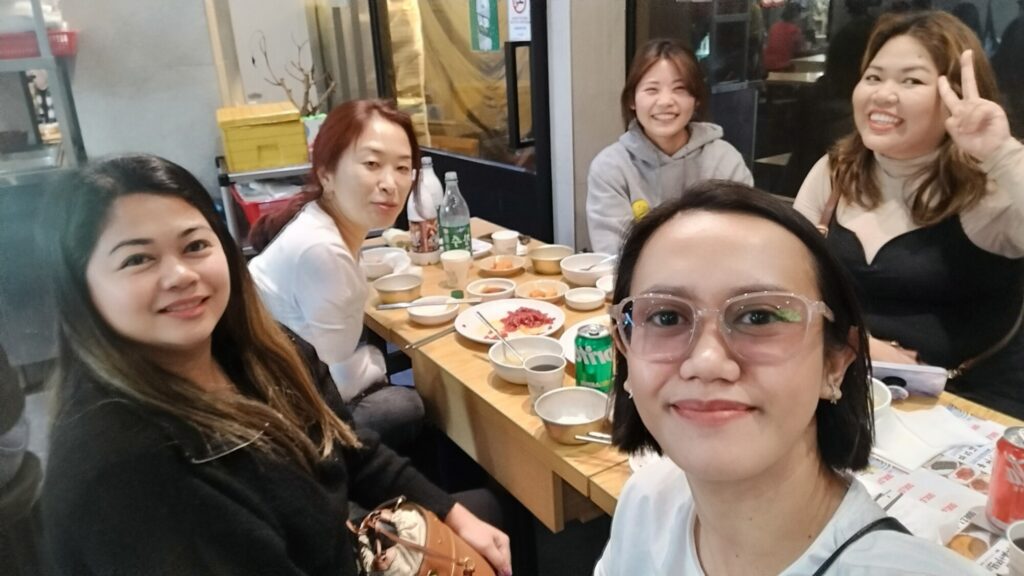
Gwangjang Market is more than just a culinary and shopping destination – it’s a cultural immersion experience. As you wander through its lively lanes, you’ll encounter street performers, storytellers, and even traditional Korean musicians, adding a touch of entertainment to your visit.
The market’s vibrant atmosphere and the friendly locals create an inviting environment for cultural exchange, making it a must-visit destination for anyone eager to delve into the heart of Seoul’s traditions.
Practical Tips
- Go early: For the freshest produce and a less crowded experience, consider visiting Gwangjang Market in the morning.
- Cash is king: While some vendors accept cards, it’s advisable to carry cash for smaller purchases and street food stalls.
- Take time to explore: Wander through the narrow lanes and hidden corners of the market to discover hidden gems and lesser-known local favorites.
- Have your camera handy: Fancy taking some snapshots? Capture the vibrant atmosphere, colorful displays, and delicious food with your camera or smartphone. The market offers numerous Instagram-worthy moments.
Enjoy!!















